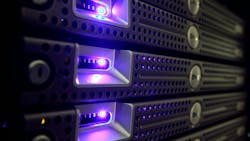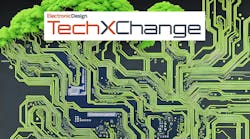Data Storage Advances Lead to More Sustainable Data Center Infrastructure
Among its many benefits, digitalization is a key component of global sustainability. The more we can replace physical objects (paper and construction materials, for example, as well as the means to manufacture and transport them) with digital representations, the closer we can get to a truly sustainable planet.
However, many fail to consider that bits and bytes and ones and zeros aren’t conjured up out of thin air. The digital infrastructure that powers today’s world has led to an increase in resource demand, from the raw materials and precious metals used to manufacture servers and other networking equipment, to the increased electricity demand to power and cool these machines.
As the world continues to digitally transform, cloud-hosting service providers and other tech leaders can’t build data centers fast enough. With the growing demand for all of the resources that go into them, it’s clear that new technologies and practices are needed to achieve the environmental promise of digital transformation.
Advances in hard-disk drives (HDDs) — the backbone of the cloud and today’s massive data lakes — are making data centers more sustainable through more efficient architectures, technological innovations, disaggregation of storage and compute resources, and recycling and remanufacturing initiatives. Data center architects are going to have to lean into these HDD advancements to meet sustainability goals.
AI’s Appetite for Data is Growing
AI-scale data centers are a growing contributor to global energy demand. According to Bloomberg, data center electricity use will surge 4X to 10X by 2030, pushing the percentage of total electricity usage from 2% today to as much as 20% in just five years.
Of course, AI is driving much of this demand. AI is only as good as the data you feed into it, and it requires massive storage capacities. More capacity means more GPU processing and data center real estate. Even human resources required to maintain AI-scale data centers contribute to power consumption through commuting, air conditioning, and lighting.
>>Check out this TechXchange for similar articles and videos on sustainability
Morgan Stanley estimates that data centers will produce 2.5 billion tons of carbon through 2030, and generative AI will increase power demands 70% annually.
Meeting Sustainability Initiatives with Higher-Efficiency HDDs
Higher-capacity, lower-cost-per-terabyte HDD solutions provide the foundation for today’s extensive data lakes that store the massive volumes of datasets used to train AI models. Think about genomic sequencing, intelligent chatbot, and real-time financial fraud detection. Each of these applications are continuously trained on petabytes of information while outputting even more data throughout the AI data cycle.
If we want to continue to innovate responsibly, organizations need to invest in higher capacity, low-power HDDs as a way to contribute to more sustainable data centers.
Here are three ways next-generation HDDs can help organizations meet sustainability goals:
1. New high-density architectures and optimization capabilities
High-capacity HDDs form the backbone of today’s cloud-based data lakes that power AI models. Therefore, any effort to consolidate capacity in a smaller footprint can go a long way toward reducing data center resources.
Innovations such as energy-assisted magnetic recording (EAMR), shingled magnetic recording (SMR), and helium-sealed HDD technology are driving capacity increases without increasing the footprint or the power profile in some cases. This means less server or storage enclosures, less maintenance and real estate, less cooling, and less overall power consumption.
2. Disaggregation of storage and compute resources
Organizations have typically had to scale storage and computing resources in concert with each other, effectively doubling the footprint of any scalability initiative. However, storage and computing can be disaggregated so that they can scale independently of each other.
Disaggregation allows organizations to prevent over-provisioning storage and compute, which happens to improve TCO along with helping to meet sustainability goals. This consolidation leads to fewer individual boxes in the data center, and, as a result, lower costs associated with regular maintenance, networking, rack space, cooling and overall power.
3. Recycling and remanufacturing processes
The emergence of a circular economy for HDDs can lead to more sustainable manufacturing and recycling efforts that extend product lifespans, minimize e-waste, and reclaim valuable materials from old drives. Initiatives like introducing recycled content in components/materials, decarbonizing manufacturing processes, and substituting high-GWP chemicals also improve the sustainability of HDDs. This ensures AI applications have the storage capacity and performance they need in a more sustainable supply chain.
Looking Ahead to the Future
Digitalization will be key to meeting long-term global sustainability goals, but increased demand presents new challenges around manufacturing, power consumption, and other costs associated with sprawling digital infrastructure.
HDD manufacturers are taking this seriously by developing more sustainable practices. This includes the development of new high-density architectures, storage disaggregation, and new sustainable recycling and remanufacturing processes. Leaning into these new sustainable practices and innovations will go a long way toward sustaining our beautiful planet for future generations to enjoy.
>>Check out this TechXchange for similar articles and videos on sustainability
About the Author
Brad Warbiany
Director of HDD Technical Marketing, Western Digital
Brad Warbiany is the Director of HDD Technical Marketing at Western Digital. Brad has been with Western Digital for over 16 years, having held previous positions at SiliconSystems, Advantech, and Altera. He holds a Certificate in Management for Technical Professionals from the Paul Merage School of Business at the University of California, Irvine and a bachelor’s degree in electrical engineering from Purdue University.

